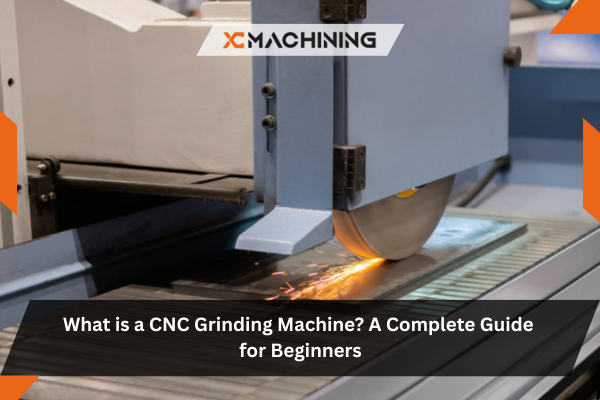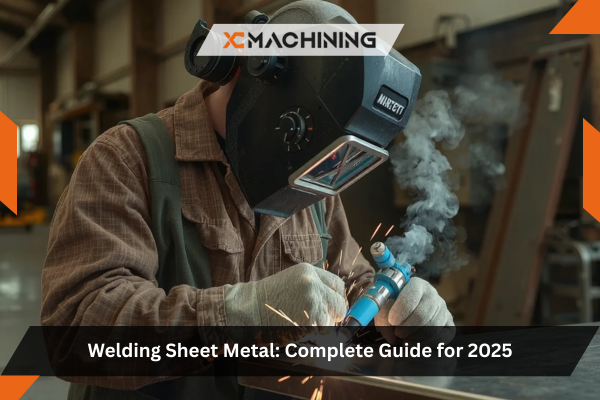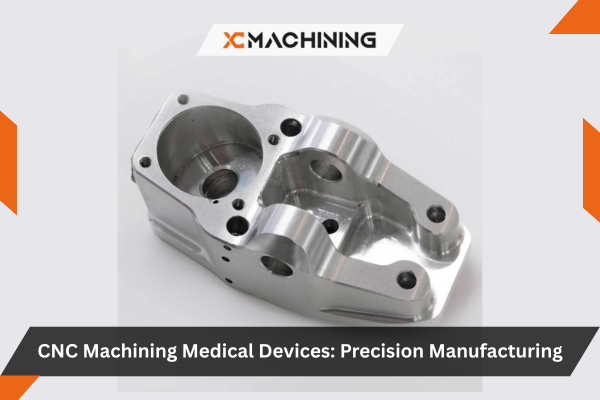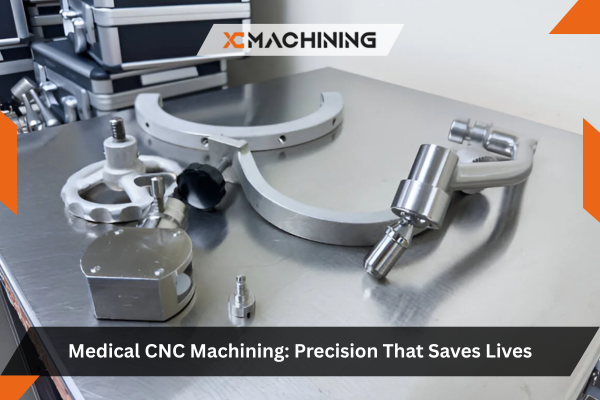Have you ever wondered how manufacturers create incredibly smooth, precise surfaces on materials like metal, ceramics, or plastic? How do they get such fine details on engine parts, medical devices, or the tools you use every day? The answer to these questions often lies in a CNC grinding machine. But what exactly is a grinding machine, and how does it work? If you’re just starting to explore the world of manufacturing or machining, understanding these machines might seem complicated at first. But don’t worry, in this guide, we’ll break down everything you need to know about CNC grinding machines.
Brief History of CNC Grinding Machines
To understand a CNC grinding machine, it’s helpful to explore its history. Over time, as manufacturing needs evolved, tools advanced significantly. As manufacturing needs became more complex, tools advanced. In the 1940s, numerical control (NC) machines appeared, using punched cards to automate mechanical movements, improving speed and accuracy.
By the 1970s, CNC (Computer Numerical Control) technology revolutionized manufacturing. Computers replaced manual control, enabling unmatched precision grinding and flexibility. Industries like automotive, aerospace, and medicine benefited from this leap. CNC grinding machines emerged, transforming grinding processes into efficient, accurate systems for producing highly detailed parts.
Understanding CNC Grinding Machines
CNC grinding machines are used for grinding, polishing, and finishing surfaces on various materials, including metal, plastic, and ceramics. These machines are essential in industries that require high precision and smooth surface finishes.
Core Components
To understand how CNC grinding machines work, let’s look at the key components:
- Grinding Wheel: This is the part that actually does the grinding. It’s made from an abrasive material that wears down the surface of the workpiece as it rotates.
- Spindle: The spindle is the part that holds and rotates the grinding wheel. It needs to be strong and precise to ensure the grinding wheel moves exactly as programmed.
- Workpiece Holder: This holds the material being ground. It’s designed to keep the workpiece secure while the grinding process happens.
- CNC Control System: The CNC control system is the brain of the machine. It translates the design and specifications into precise instructions for the machine’s movements.
Working Principle
Understanding the working principle of a CNC grinding machine helps to grasp how it functions. At its core, the machine uses a rotating grinding wheel to wear down material from the surface of the workpiece.
The Grinding Wheel and Abrasive Particles
The grinding wheel is made from abrasive particles, which are crucial in shaping, smoothing, and finishing the material. These particles grind away small amounts of the workpiece to achieve the desired surface finish.
Positioning the Workpiece
The workpiece, which could be made of materials like metal, plastic, or ceramics, is placed on a fixture that securely holds it in position during the grinding process. The workpiece can be adjusted and moved along the x, y, and z axes to ensure accurate grinding.
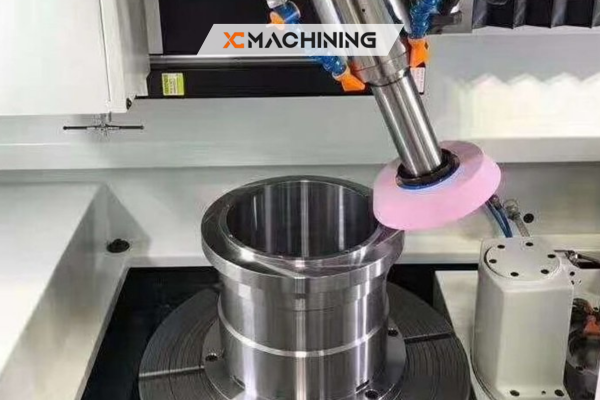
The Role of Automation
The main advantage of CNC grinding lies in its automation. Unlike manual grinding, where the results depend on the operator’s skill, CNC grinding relies on computerized controls to provide consistent, precise results. The computer program translates the design of the part into specific instructions for the grinding machine, ensuring that the process is done with accuracy.
How the Machine Operates?
The CNC system tells the machine how much material to remove, at what speed, and where the grinding force should be focused. It controls the rotation of the grinding wheel and the movement of the workpiece, making sure everything happens at the right time and place.
Consistency and Repeatability
The automated system ensures that the grinding wheel remains at the correct angle and position, eliminating human error. This feature makes CNC grinding machines ideal for high-volume production, as they deliver consistent results every time. Whether you’re making one part or thousands, CNC grinding can maintain the same level of precision.
Importance in Industries
This high degree of automation and precision is especially important in industries like aerospace and automotive manufacturing, where tight tolerances and consistent quality are essential. The result is a surface that’s finely finished, with excellent repeatability, making CNC grinding a preferred method in precision industries.
Types of CNC Grinding Machines
There are several types of CNC grinding machines, each with unique capabilities suited to specific tasks. The choice of machine depends on the type of part being worked on and the required finish. Here’s a breakdown of the most common types:
Surface Grinders
Surface grinders are one of the most common types of CNC grinding machines. These machines are primarily used for grinding flat surfaces, such as the sides of metal blocks or components. The workpiece is held securely on a flat surface, and the grinding wheel moves across it to remove material evenly.
- How it works: The workpiece is either mounted on a magnetic table or held in place by a fixture while the grinding wheel moves back and forth, grinding down the surface to achieve a smooth, even finish.
- Applications: Surface grinders are used in industries where flatness and smoothness are crucial, such as in toolmaking, automotive parts, and precision machining. For example, flat metal plates used in machinery often require grinding for precision and to remove imperfections.
Cylindrical Grinders
Cylindrical grinders are designed to grind cylindrical parts, such as rods, shafts, or tubes. The key feature of cylindrical grinding is that the workpiece itself rotates, while the grinding wheel moves along the length of the part.
- How it works: In cylindrical grinding, the part rotates between two centres or over a rotating chuck while the grinding wheel moves along its length. The machine can grind both the outside surface (OD) and the inside surface (ID) of cylindrical parts.
- Applications: Cylindrical grinding is used for parts that require a high degree of roundness and concentricity, such as precision shafts, bearings, or valves. These parts are often found in the automotive, aerospace, and manufacturing industries.
Centerless Grinders
Centerless grinders are unique because they do not use a workpiece holder. Instead, the part is fed between two grinding wheels, one of which controls the feed and the other provides the grinding action. This type of grinding machine is ideal for parts that require continuous feeding without stopping the machine.
- How it works: The part is positioned between two grinding wheels: one wheel is the regulating wheel, which controls the feed rate, while the other is the grinding wheel, which does the actual grinding. The part is pushed through the system in a straight line, with no need for a fixture or workpiece holder.
- Applications: Centerless grinding is widely used for mass production of small parts that need to be ground on all sides, such as pins, rods, and bearings. It’s also commonly used in industries like automotive manufacturing, where high volumes of precision parts are needed quickly and efficiently.
Internal Grinders
Internal grinders are specialized for grinding the internal diameter of a workpiece. This is essential for parts that require smooth, precise holes or inner surfaces, such as pipes, tubes, or bushings.
- How it works: The workpiece is held in a fixture, while the grinding wheel moves inside the part, grinding the internal surface to the desired finish. These machines typically use a small, cylindrical grinding wheel that can fit into the inner diameter of the part.
- Applications: Internal grinders are used in industries that require precision in hollow or cylindrical parts. For example, they are used to grind the inner surfaces of automotive engine components, hydraulic cylinders, or gas turbine components, where tight tolerances are essential.
Advantages of CNC Grinding
Now that we understand the basics of a CNC grinding machine, let’s take a look at the key advantages they offer.
Precision and Accuracy
One of the most significant benefits of CNC grinding machines is their precision. Traditional grinding relies heavily on the skill of the operator. With CNC machines, however, everything is controlled by a computer program, meaning the machine can consistently deliver the exact same result every time.
- Fact: CNC grinding machines can achieve tolerances as tight as 0.001mm, which is crucial for industries like aerospace and medical device manufacturing.
This level of precision machining ensures that parts are produced exactly to specifications, reducing waste and the need for rework.
Efficiency and Productivity
CNC grinding machines are faster than traditional grinding methods, thanks to their automation. They can run continuously, with minimal human intervention. Once set up, the machine can produce multiple parts without stopping, increasing overall productivity.
- Example: In a manufacturing plant, a CNC grinding machine can grind hundreds of parts in a day, while a manual grinder would take much longer.
This efficiency makes CNC grinders an essential tool in industries that need to produce high volumes of parts quickly.
Versatility
CNC grinding machines are versatile, meaning they can handle a variety of materials and tasks. Whether you need to grind metal, ceramics, or plastic, a CNC grinding machine can be programmed to meet your specific requirements. They’re also capable of performing different types of grinding, from surface grinding to cylindrical grinding, giving them flexibility in manufacturing.
Cost-Effectiveness
While CNC grinding machines may require a significant initial investment, they can save money in the long run. Their speed and accuracy reduce waste and the need for expensive rework, leading to cost savings for manufacturers. For high-volume production, these machines provide an excellent return on investment.
Applications of CNC Grinding
CNC grinding machines are widely used in various industries. Let’s explore some of the key sectors that rely on CNC grinding.
Automotive Industry
In the automotive industry, CNC grinding machines are used to produce parts like gears, shafts, and brake components. The need for precision in automotive parts is high, and CNC grinders help meet these exacting standards.
- Key Applications: Grinding gears, pistons, crankshafts, and brake components used in vehicles.
Aerospace Industry
The aerospace industry demands incredibly precise parts for its aircraft and engines. Manufacturers use CNC grinding machines to produce components like turbine blades, rotors, and other critical parts that require high levels of precision and durability.
- Key Applications: Grinding turbine blades, compressor rotors, and critical structural components for aircraft.
Medical Industry
In the medical devices, manufacturers use CNC grinding machines to produce high-precision components for medical devices and implants. This includes items like dental implants, prosthetics, and surgical instruments, all of which need to meet strict standards for safety and quality.
- Key Applications: Grinding surgical tools, joint replacements, and dental equipment.
Other Industries
In addition to the automotive, aerospace, and medical industries, various other sectors use CNC grinding, including:
- Toolmaking: To sharpen cutting tools.
- Energy: For grinding turbine components and other power generation equipment.
- Electronics: For precision components used in electronics assembly.
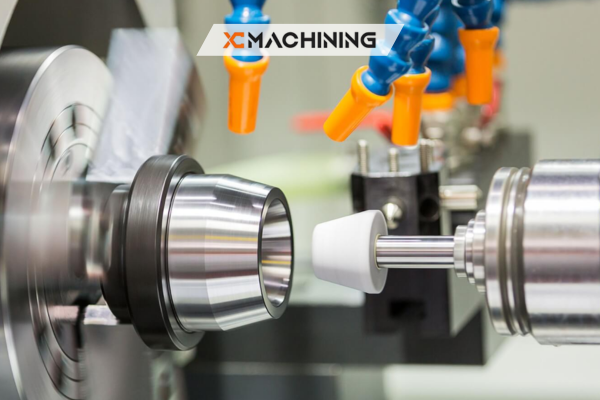
Future Trends in CNC Grinding
The world of CNC grinding constantly evolves, and several trends shape its future.
Advanced Materials
As industries demand stronger, lighter, and more durable materials, CNC grinding machines will need to keep up. Advanced materials like ceramics, composites, and superalloys are becoming more common, and CNC grinding is evolving to handle these materials effectively.
- What this means: Manufacturers will need to use more advanced grinding techniques and tools to process these materials efficiently.
Additive Manufacturing Integration
In the future, there will likely be more integration between CNC grinding machines and additive manufacturing (3D printing). This could create a more streamlined workflow where parts are printed and then ground to achieve a smooth finish.
- What this means: A combination of 3D printing and CNC grinding will make it easier to produce complex, customized parts with minimal waste.
Artificial Intelligence and Machine Learning
AI and machine learning are starting to make their way into CNC grinding. You can use these technologies to optimize grinding processes, predict maintenance needs, and improve overall machine performance.
- What this means: CNC grinding machines could become even more efficient, with the ability to learn and adapt to various tasks on the fly.
Remote Monitoring and Maintenance
As technology advances, remote monitoring and predictive maintenance will become more prevalent in CNC grinding machines. This means operators and technicians will be able to monitor the health of machines from anywhere, reducing downtime and increasing productivity.
- What this means: Remote maintenance and troubleshooting will lead to faster repairs and fewer interruptions in the grinding process.
Conclusion
CNC grinding machines are essential in today’s manufacturing world, offering high precision, efficiency, and versatility. They are used in industries ranging from automotive and aerospace to medical and electronics, where accuracy is critical. As technology continues to evolve, the future of CNC grinding looks promising, with advancements in materials, AI, and additive manufacturing.
If you’re looking for precision and efficiency in your manufacturing process, investing in a CNC grinding machine could be the right move. Are you ready to explore how CNC grinding can benefit your business or project?
FAQs
What is a CNC grinding machine?
A CNC grinding machine is a computer-controlled tool used to shape and smooth materials like metal, ceramics, or plastic with high precision and accuracy.
How does a CNC grinding machine work?
It uses a computer program to control a grinding wheel, which spins at high speeds to remove material from a workpiece, creating the desired shape and finish.
Can CNC grinding machines handle all materials?
Yes, they can grind a variety of materials, including metals, ceramics, plastics, and composites, making them highly versatile across industries.
What is the future of CNC grinding technology?
The future includes AI integration, remote monitoring, additive manufacturing support, and improved grinding capabilities for advanced materials like composites

